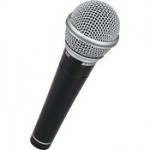• What seven items should you bring with you when you are shooting an interview?
(Clocks Tick Tock Making Heads Pound Loudly)
C - Camera
T - Tape
T - Tripod
M - Microphone (Hang loose symbol away)
H - Headphones
P - Power(Ac adaptor or battery)
L - Lights (Camera light, floor light, natural lighting)
• Shooting into a light source = Shooting into a light source causes a silhouette

Button to adjust = Backlight button or add light to the front
• Where do you want your light source?
Light should always be behind the camera
• On what object should you focus the camera?
The nose
• No tripod= bad
• Date and Time= This is permanently recorded on your tape
• What's the difference between SP/EP? Standard play and Extended play, going to ep will allow you to record more in lower quality. Always shoot in SP
• Camera shoots in SP, higher quality
• Pre-Roll- 2-3 seconds before you start your interview
• Post-Roll- 2-3 seconds after interview keep recordeing so we dont cut off what they say and have room to edit
CAMERA SHOTS:
***BACKGROUND: Dynamic=has some depth, not plain. Interviewee is at least 6-8 feet from wall, interviewee is the main focus
• 1 Shot= middle of the chest to the head, centered in the frame
• 1 Shot with graphic=middle of chest to head but panned to the side so you can see the graphic
• 2 Shot= only for anchors when they are interacting
• CU- Close up zoomed in on subject to show detail
• MS- Medium shot, not a close up or a long shot
• LS- Long shot, shows persons whole body
• ECU- Extreme close up, very zoomed in
• Rule of thirds- Imaginary lines to help frame the shot
CAMERA MOVEMENTS:
• Tilt- Up and down, tilt it to follow something in the air
• Pan- From left to right, only when following something side to side
• Zoom- getting closer or farther away from the subject, if somethings moving away or getting closer to you
• Dolly- Physically rolling the camera on wheels
LIGHTS
• Key- The strongest light that does most of the lighting, 45 degree angle
• Fill- Fills in the shadows from the other direction, opposite 45 degree angle from the key light
• Back- Light behind the subject, counteracts the key light
MICROPHONES:
• Unidirectional- Taking sound from one direction
• Omnidirectional- Taking sound from all directions, built into camera
• Cardiod- Heart shaped, taking sound from front and a little from the sides
• Lav/Lapel Microphone- Can clip onto shirt
• Boom Microphone- Microphone on long pole, unidirectional

No comments:
Post a Comment